TORONTO (Aug. 16) — When the Maple Leafs begin training camp at the Gale Centre in Niagara Falls, Ont. less than a month from now (Sep. 14), most eyes will be on John Tavares, the Toronto boy that signed a seven–year, $77–million contract in July. Not since Curtis Joseph came aboard from the Edmonton Oilers 20 years ago has the Blue and White landed such a potentially dynamic figure on the open market.
All things being equal, however, neither Tavares, nor Auston Matthews, nor any combination of prolific forwards, will determine whether the Leafs improve on their playoff performance of the past two springs. To advance beyond the opening round, Mike Babcock absolutely must deploy his No. 1 goalie more prudently than last season. Even a casual hockey observer could see that Frederik Andersen was pooped toward the end of the regular schedule, yet Babcock continued to ride him as he had from the outset. The result? Andersen was left with only fumes at the end of the Boston series and could not provide the Leafs an adequate cornerstone in Game 7 at the TD Garden. Why Babcock over–stressed Andersen remains anomalous, particularly when it was clear that Curtis McElhinney could offer more–than–capable support.
If I were to guess, I’d say it had something to do with Babcock’s selfdom (a nicer word than “ego”). Coaches like to see W’s on their record and ol’ Mike probably felt the Big Dane could enhance the total, even after it was clear the Leafs would make the playoffs and finish third in the Atlantic Division. Were that Babcock’s motivation, it worked marvelously, as the Maple Leafs established franchise records with 49 victories and 105 points. Neither of which meant squat on the night of Apr. 25, after the 7–4 pounding by the Bruins.
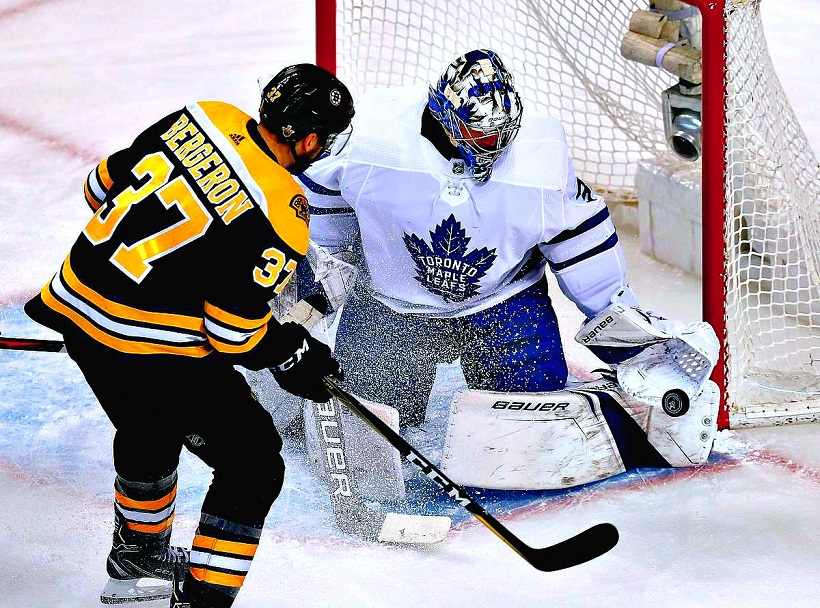
GAME 7 AT BOSTON (Apr. 25, 2018) DIDN’T GO NEARLY AS WELL FOR A TIRED FREDERIK ANDERSEN AS IT DID PERENNIAL LEAFS–KILLER PATRICE BERGERON. Toronto Star Photo
So, it seems quite obvious that a whopping 66 game–appearances is not in Andersen’s (or the club’s) prime interest. In fact, all Babcock needs is to examine his best playoff years in Detroit — 2008 and 2009 — when the Red Wings made consecutive trips to the Stanley Cup final. In each regular season, his playoff goalie, Chris Osgood, appeared in roughly half the games — 43 in 2007–08 and 46 in 2008–09. Yes, Babcock had, at his disposal, an aged Dominik Hasek in ’07–08 and was comfortable splitting chores with the 43–year–old future Hall–of–Famer. Moreover, the Red Wings were still in the Western Conference and traveled as much as any team in the National Hockey League. So, it was prudent to share the load. It was also clear that the rest provided Osgood during the course of six months (October to April) bore spectacular results once the Stanley Cup tournament began. In 19 playoff games, the Peace River, Alta. native led all teams with 14 wins and a sparkling 1.55 goals–against average. Detroit beat Nashville, Colorado, Dallas and Pittsburgh to win the lone championship (to date) of Babcock’s NHL career. Osgood could have easily won the Conn Smythe Trophy, but the voters went with teammate Henrik Zetterberg, who topped all scorers with 27 points.
In 2008–09, Babcock probably had less impetus to divide the goaltending chores. Hasek went home to Europe to finish his career and Osgood’s back-up was Ty Conklin; this perhaps marking the only time Hasek and Conklin have shared the same sentence. Still, Osgood appeared in 46 games; Conklin 40, and Osgood was again brilliant in 23 playoff matches with a 2.01 GAA and .926 save–percentage. The Red Wings defeated Columbus, Anaheim and Chicago to win their second consecutive Western title. Against Pittsburgh, again, for the Stanley Cup, the home team held serve until Game 7 at Joe Louis Arena when a pair of goals by Maxime Talbot lifted the Penguins to a 2–1 triumph and the first of three NHL championships for Sidney Crosby.
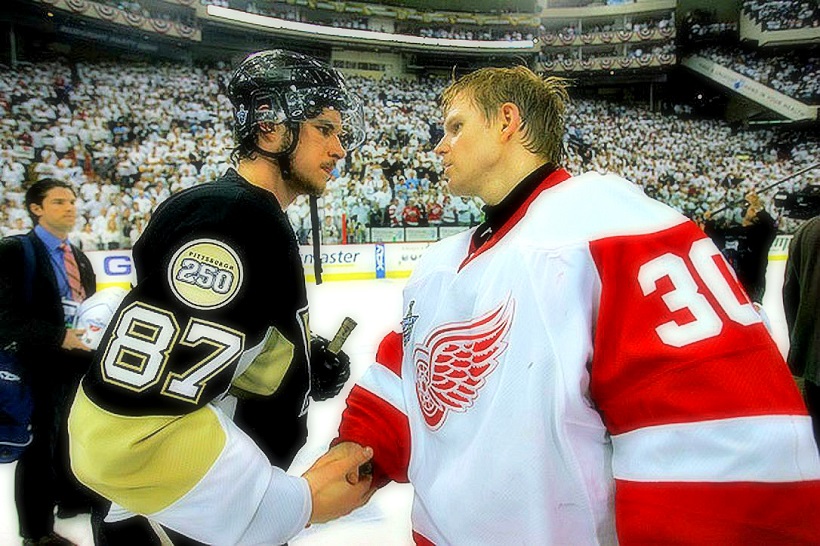
CHRIS OSGOOD (RIGHT) SHAKES HANDS WITH SIDNEY CROSBY AT THE OLD MELLON ARENA IN PITTSBURGH ON JUNE 4, 2008, MOMENTS AFTER THE RED WINGS EDGED THE PENGUINS, 2–1, IN GAME 6 OF THE STANLEY CUP FINAL. IT PROVIDED MIKE BABCOCK HIS LONE NHL TITLE. Toronto Star Photo
Babcock has yet to explain why he regularly deployed Andersen prior to the playoffs last season when the goalie was unmistakably fatigued. The Leafs were all–but mathematically locked into third place in the Atlantic, yet a tired Andersen appeared, for example, in a thoroughly meaningless game at Buffalo on Mar. 15 against the abysmal Sabres (yay, the visitors won, 5–2). Meanwhile, McElhinney was glued to the bench with a 2.14 GAA and .934 SV% in 18 relief matches; numbers that screamed for him to spell Andersen more often down the stretch. Again, Babcock’s misuse of his No. 1 netminder came to a head at the most–inopportune time — the decisive playoff match at TD Garden, when Andersen couldn’t stop a balloon.
Toronto hockey fans are justifiably excited about the coming season. With the addition of Tavares, the Leafs haven’t been as loaded up front since the late–1940’s and early–50’s. When Stanley Cup titles were aplenty. In the absence of a Turk Broda (or, a Johnny Bower from the 60’s), the Leafs need to maximize Andersen in every way. During the post–1967 era, and strictly from a talent perspective, Andersen ranks alongside the best goalies the Leafs have employed for a period of time: Joseph, Ed Belfour, Mike Palmateer and Felix Potvin. He hasn’t yet, however, come close to any of the aforementioned in playoff worthiness. There’s precious–little indication, after two years, that he’s of Stanley Cup caliber.
What we do know is that 66 regular–season appearances is not a recipe for the native of Denmark.
Whether Babcock agrees will largely determine how the Leafs fare next spring.
W.H.A. GAME–WORN JERSEYS
Continuing with my summer series of looking at hockey fashion from the past, I today feature the World Hockey Association, which served as a rival to the NHL for seven seasons: 1972–73 to 1978–79. Several of the greatest all-time players appeared in the WHA — Bobby Hull and Gordie Howe toward the end of their careers; Wayne Gretzky, Mark Messier, Michel Goulet and Mike Gartner at the beginning. The rogue league was never viable, financially. Teams moved hither–and–yon from city to city, yet the WHA subsisted for the best part of a decade before four of its survivors — the Edmonton Oilers, Hartford Whalers, Quebec Nordiques and Winnipeg Jets — were ingested by the NHL for the 1979–80 season. Here are game–worn jerseys from 25 WHA teams (including one that never faced off) and the arenas in which they played:
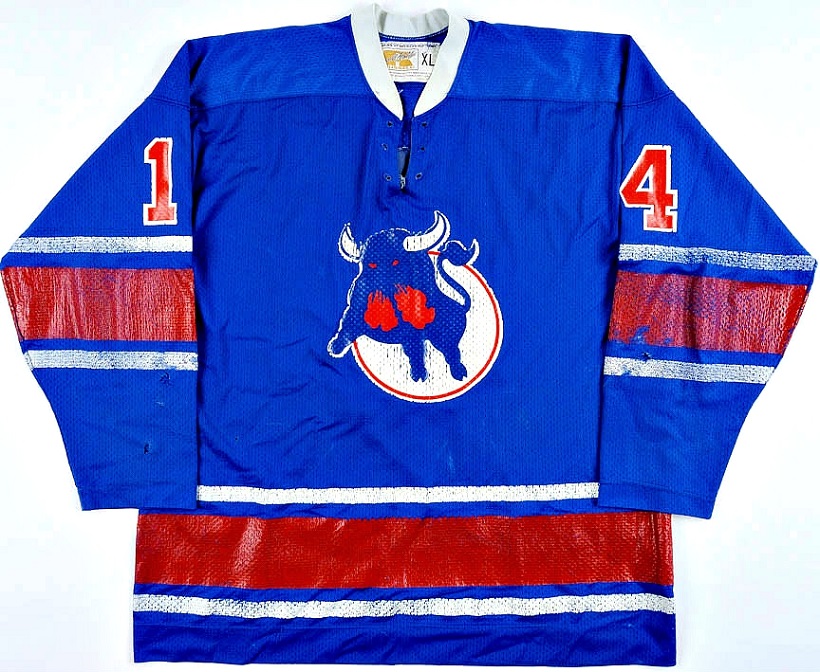
BIRMINGHAM BULLS: 1976–77 to 1978–79 — Jefferson County Civic Center (16,753)
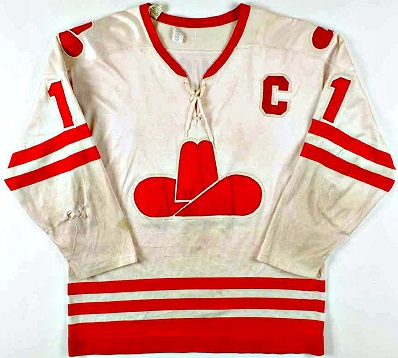
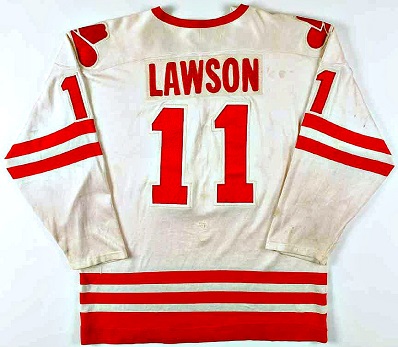
CALGARY COWBOYS: 1975–76 to 1976–77 — Calgary (Stampede) Corral (8,945)
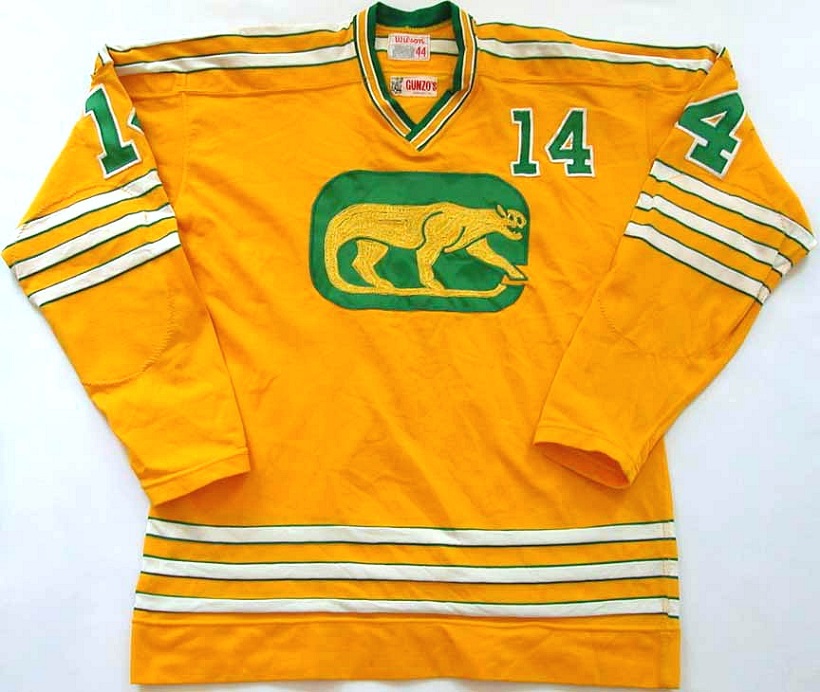
CHICAGO COUGARS: 1972–73 to 1974–75 — Chicago International Amphitheater (9,000)
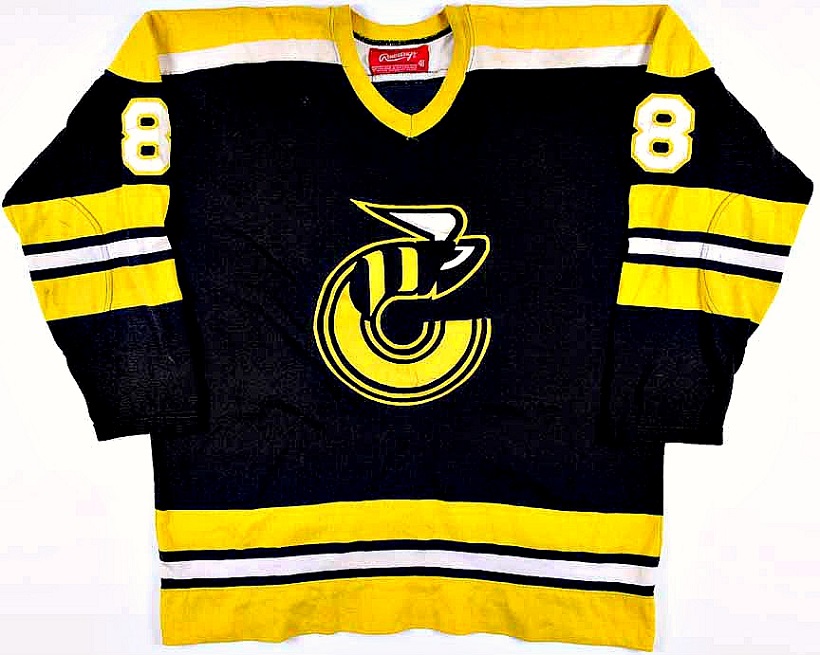
CINCINNATI STINGERS: 1975–76 to 1978–79 — Riverfront Coliseum (15,820)
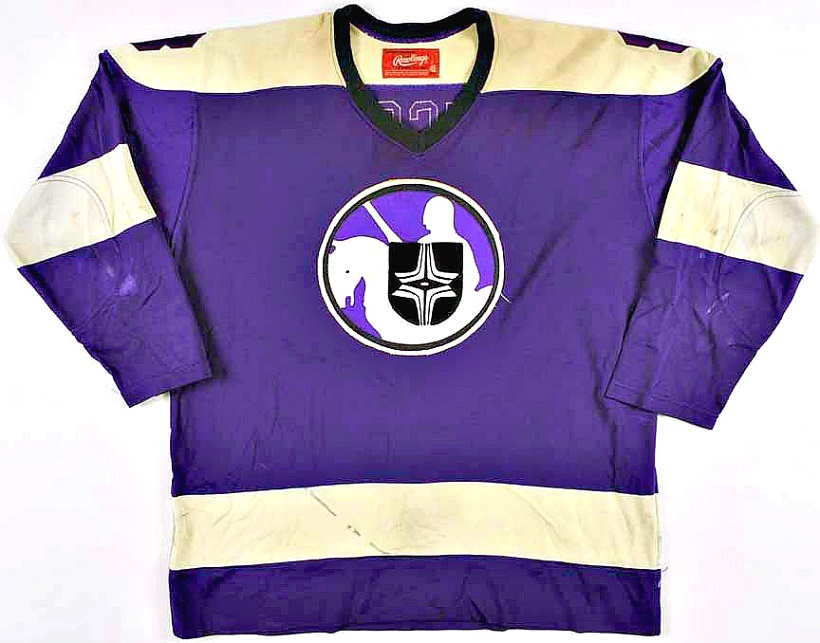
CLEVELAND CRUSADERS: 1972–73 to 1975–76 — Cleveland Arena (9,847) / Richfield Coliseum (19,861)
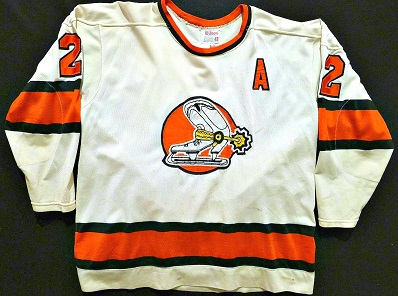
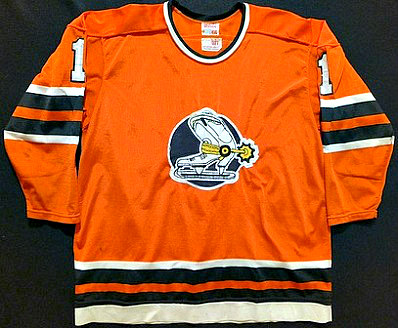
DENVER SPURS: 1975–76 — McNichols Sports Arena (16,800)
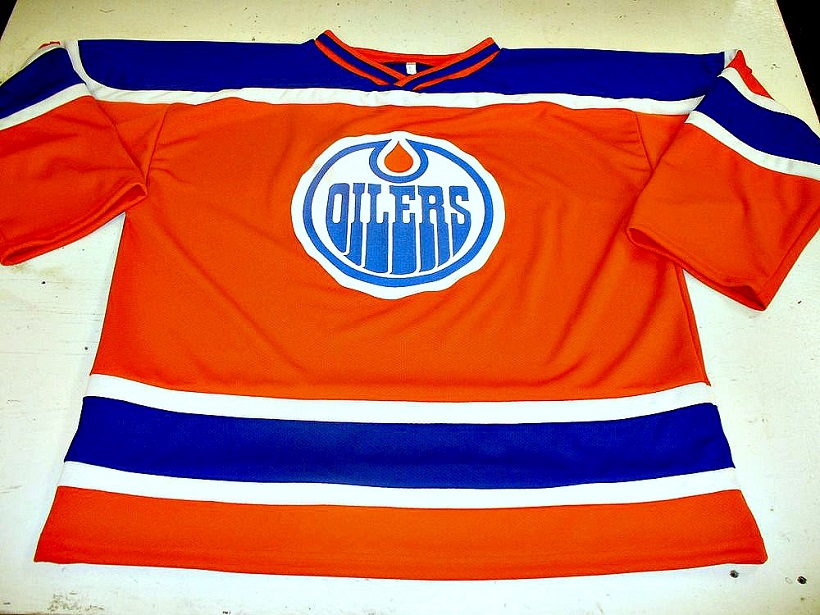
ALBERTA OILERS: 1972–73 — Edmonton Gardens (5,200)
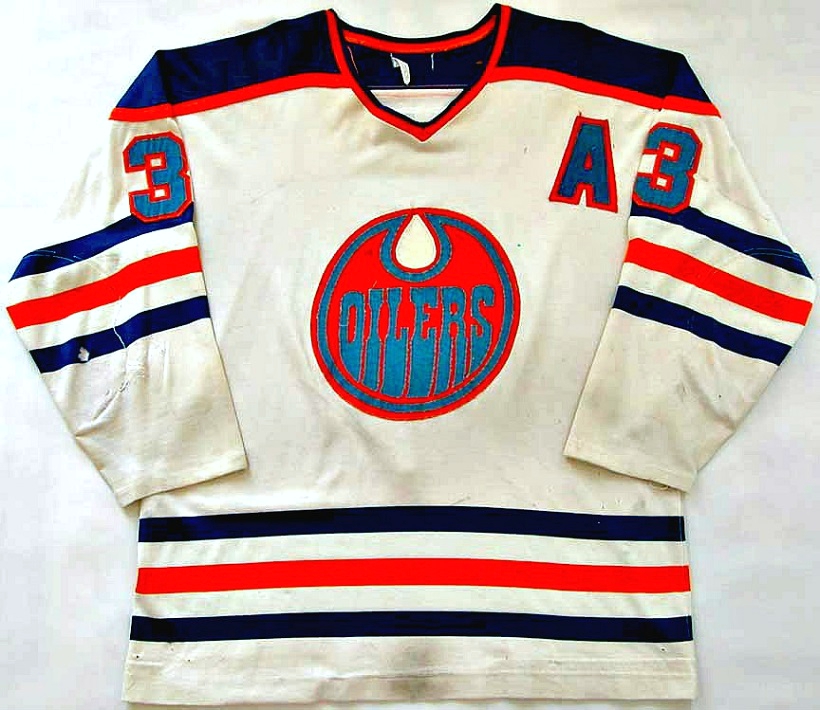
EDMONTON OILERS: 1973–74 to 1978–79 — Edmonton Gardens (5,200) / Northlands Coliseum (15,513)
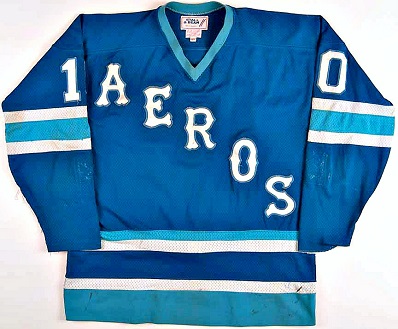
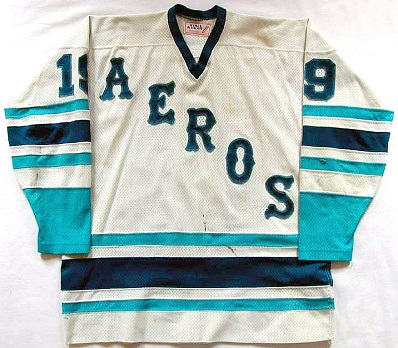
HOUSTON AEROS: 1972–73 to 1977–78 — Sam Houston Coliseum (9,300) / The Summit (14,906)
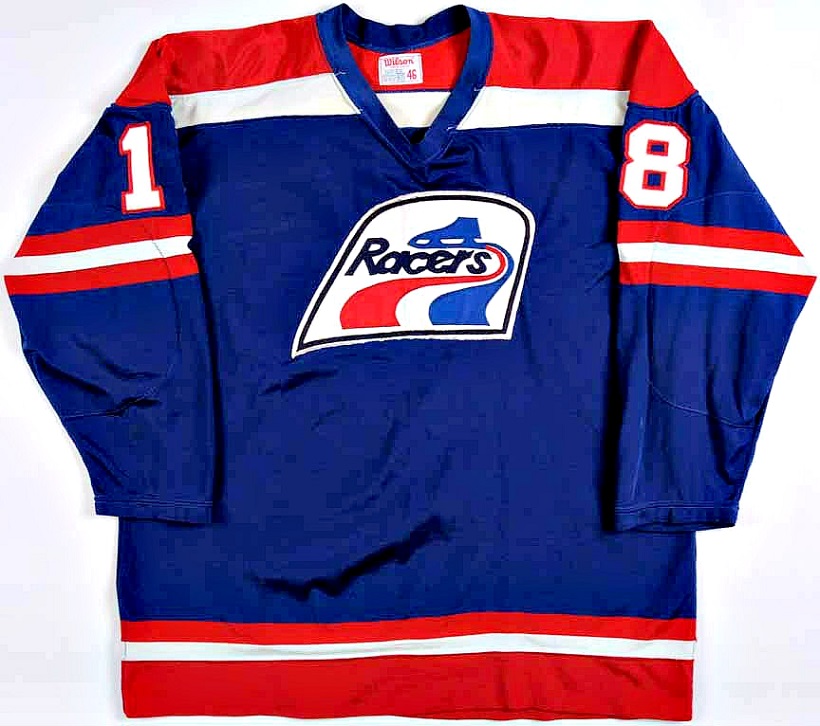
INDIANAPOLIS RACERS: 1974–75 to 1978–79 — Market Square Arena (16,500)
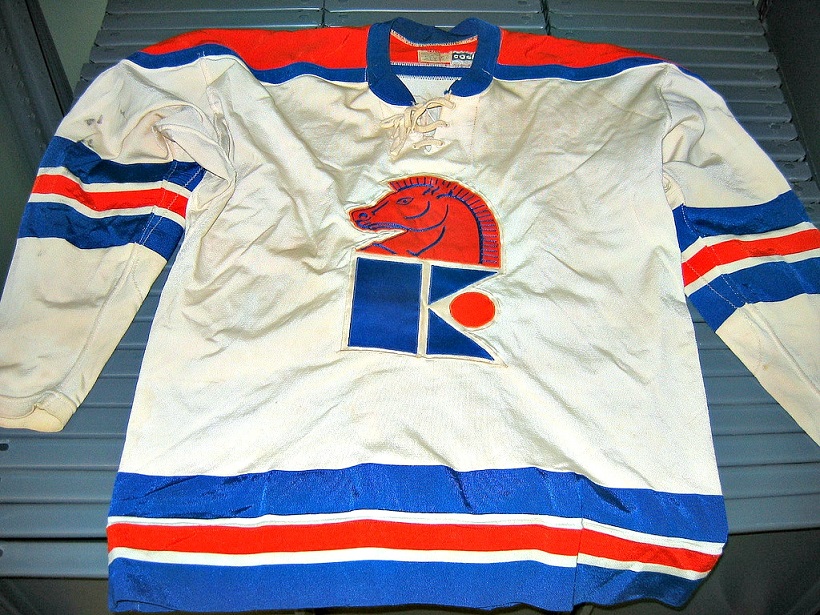
JERSEY KNIGHTS: 1973–74 — Cherry Hill (N.J.) Arena (4,000)
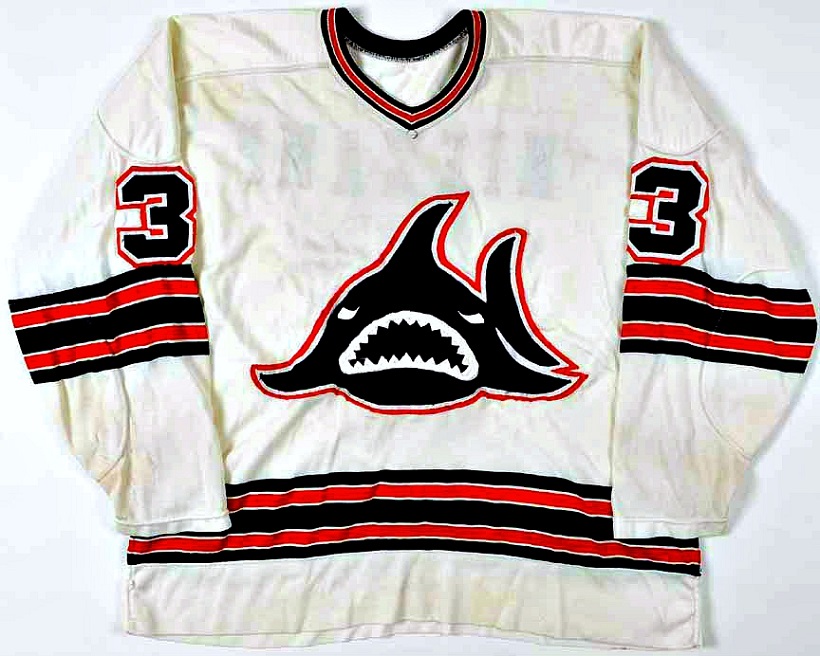
LOS ANGELES SHARKS (Above & Below): 1972–73 to 1973–74 — Los Angeles Sports Arena (14,700)
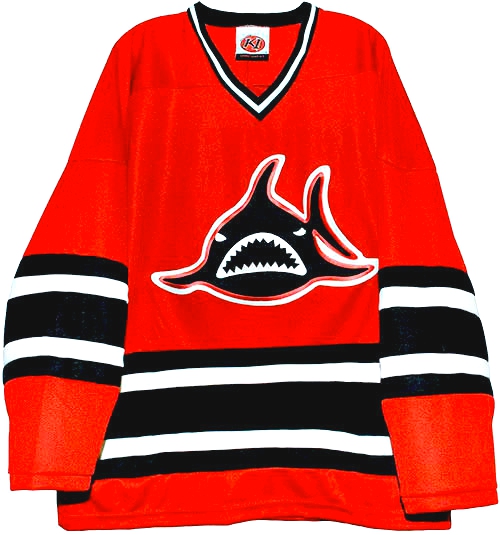
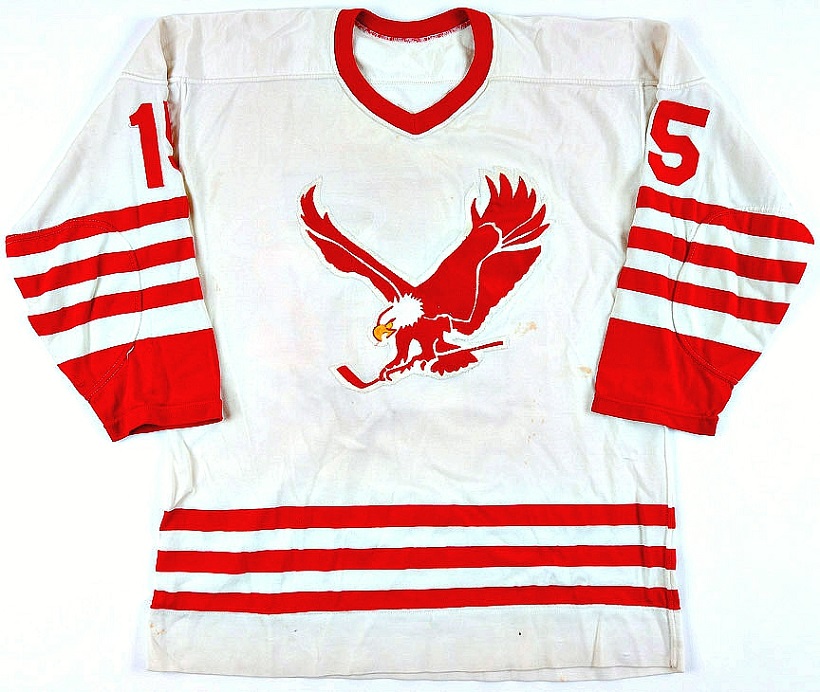
MIAMI SCREAMING EAGLES: Charter WHA Member — Franchise Transferred to Philadelphia
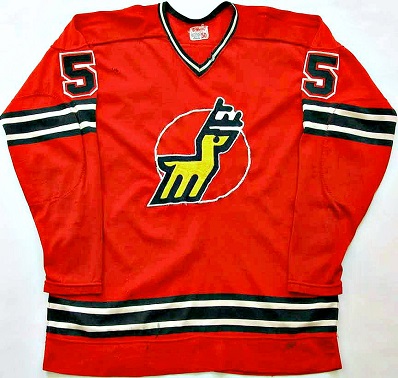
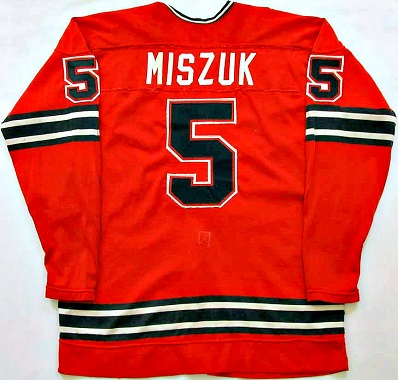
MICHIGAN STAGS: 1974–75 — (Detroit) Cobo Hall (10,200)
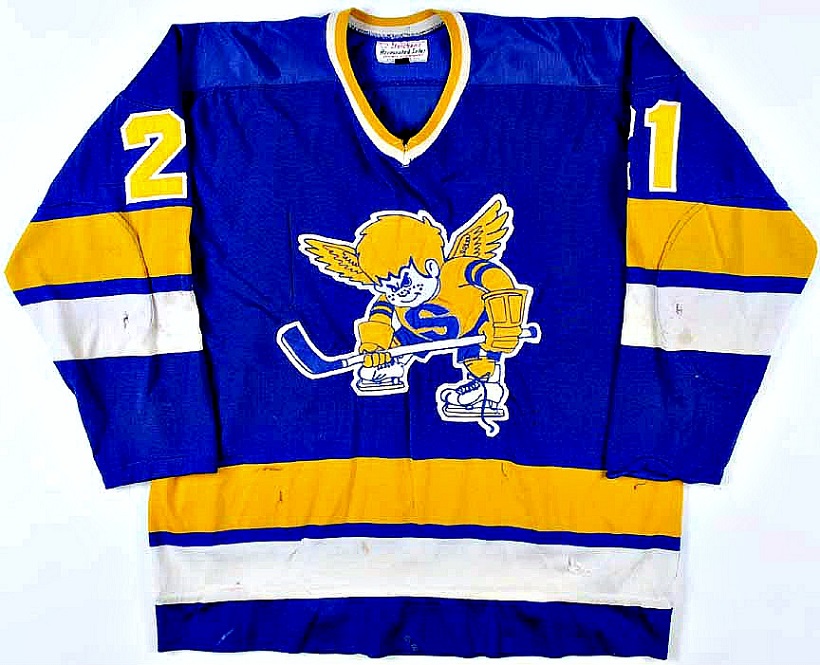
MINNESOTA FIGHTING SAINTS: 1972–73 to 1975–76 — St. Paul Civic Center (15,705)
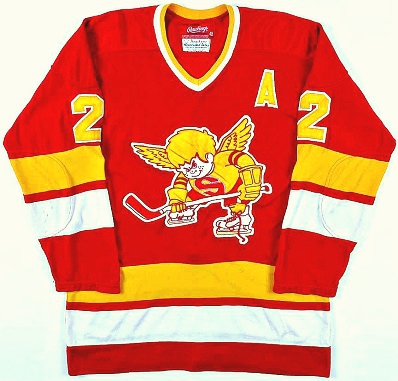
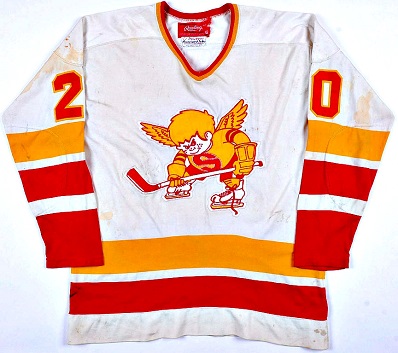
MINNESOTA FIGHTING SAINTS: 1976–77 — St. Paul Civic Center (15,705)
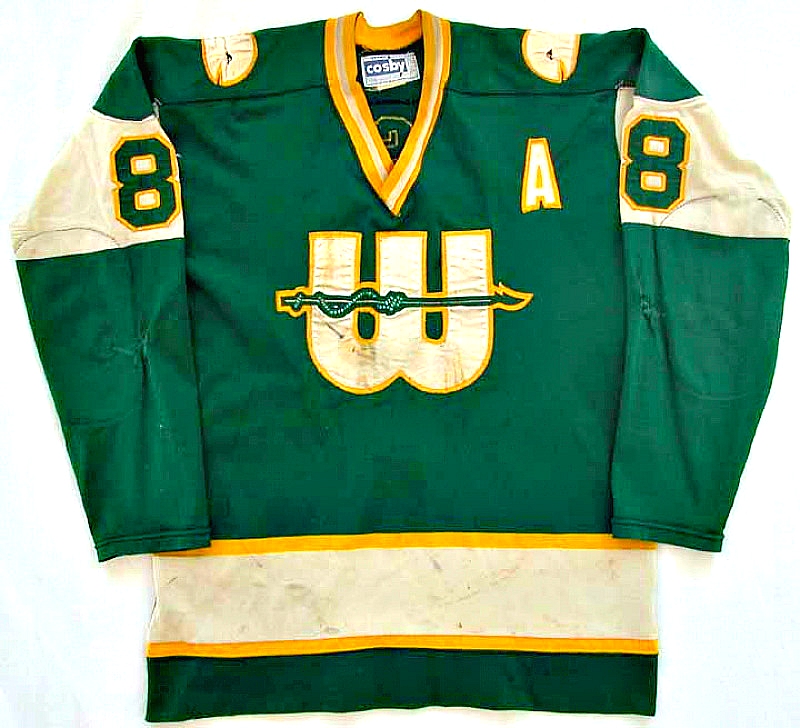
NEW ENGLAND WHALERS: 1972–73 to 1978–79 — Boston Garden (13,442) / Boston Arena (6,000) /
Eastern States Coliseum (5,513) / Hartford Civic Center (10,507) / Springfield Civic Center (7,725) /
(Re-Built) Hartford Civic Center (14,250)
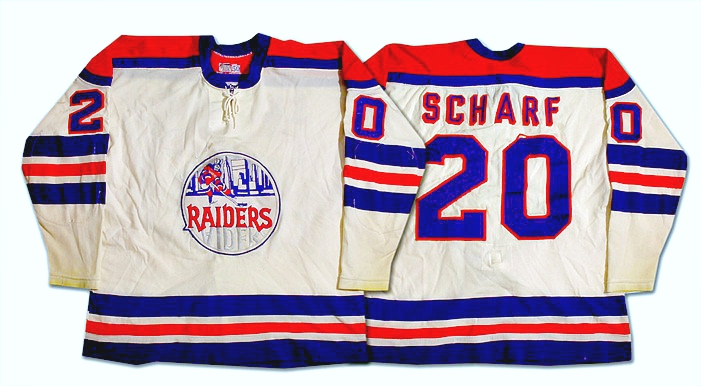
NEW YORK RAIDERS: 1972–73 — Madison Square Garden (17,500)
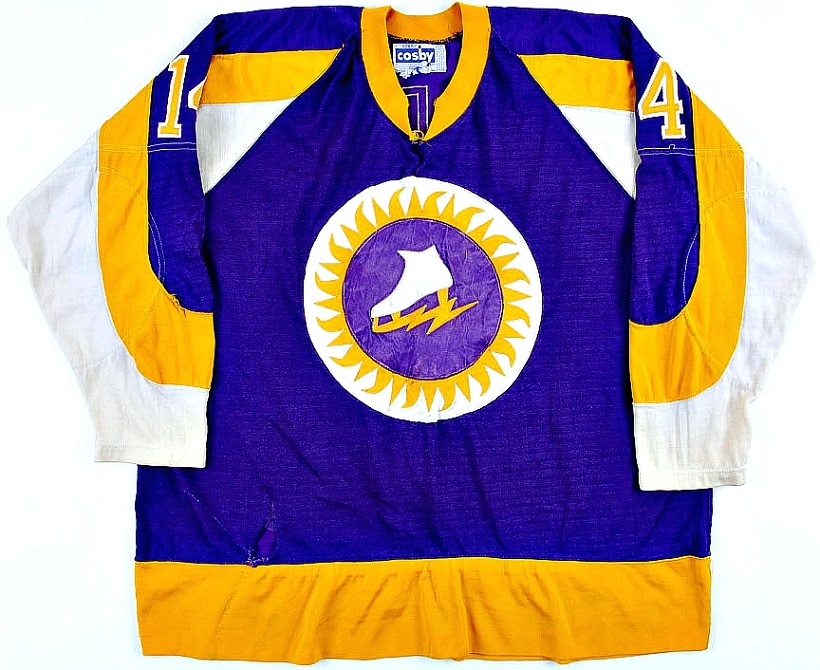
NEW YORK GOLDEN BLADES: 1973–74 — Madison Square Garden (17,500)
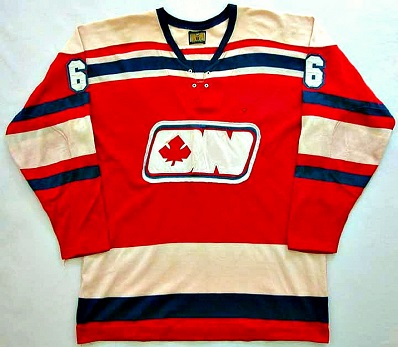
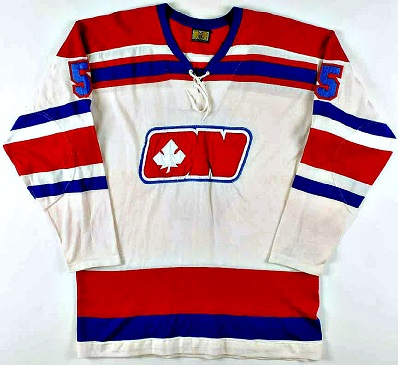
OTTAWA NATIONALS: 1972–73 — Ottawa Civic Center (10,500)
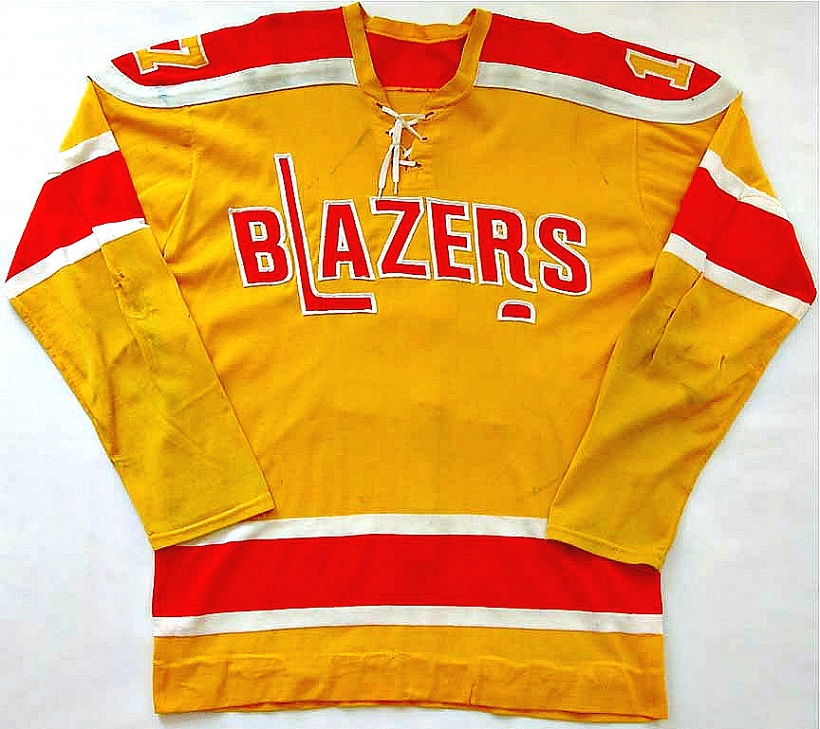
PHILADELPHIA BLAZERS: 1972–73 — Philadelphia Civic Center (8,000)
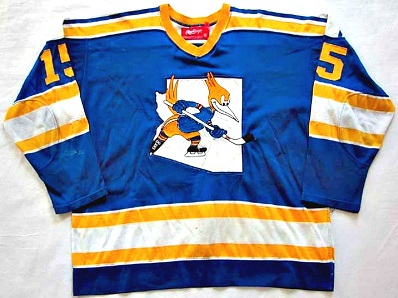
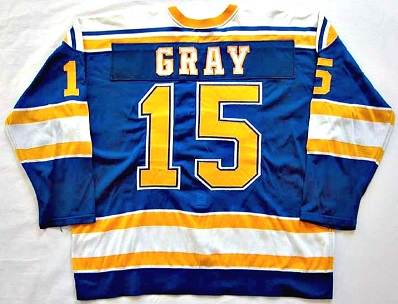
PHOENIX ROADRUNNERS: 1974–75 to 1976–77 — Veterans Memorial Coliseum (12,600)
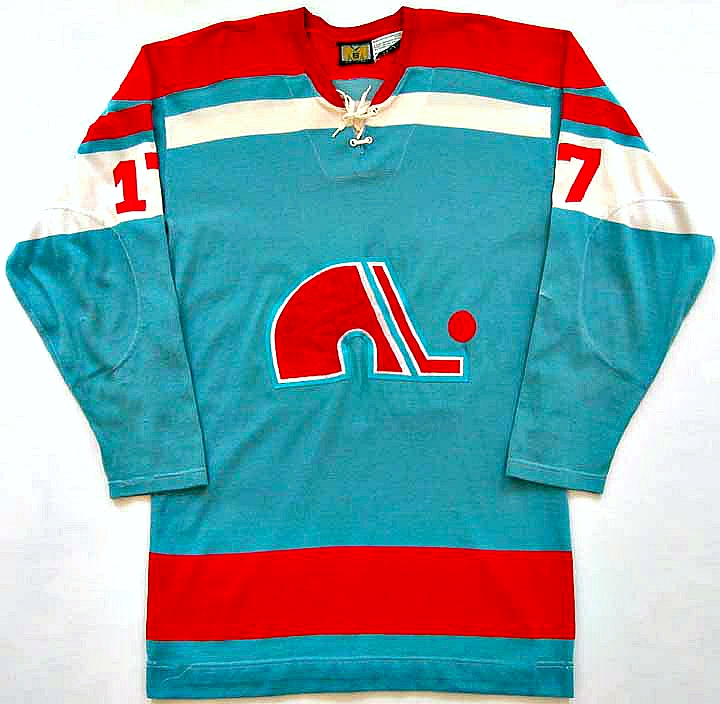
QUEBEC NORDIQUES: 1972–73 — Le Colisee (10,004)

QUEBEC NORDIQUES: 1973–74 to 1978–79 — Le Colisee (10,004)
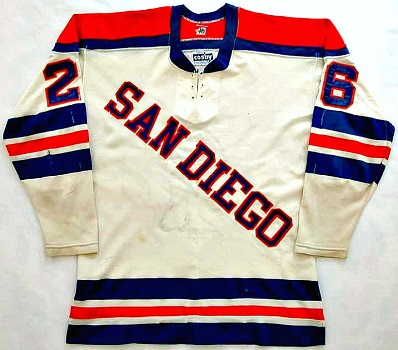
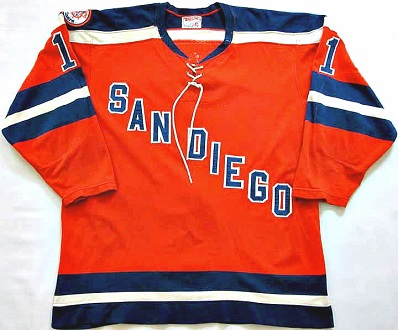
SAN DIEGO MARINERS: 1974–75 to 1976–77 — San Diego Sports Arena (13,039)
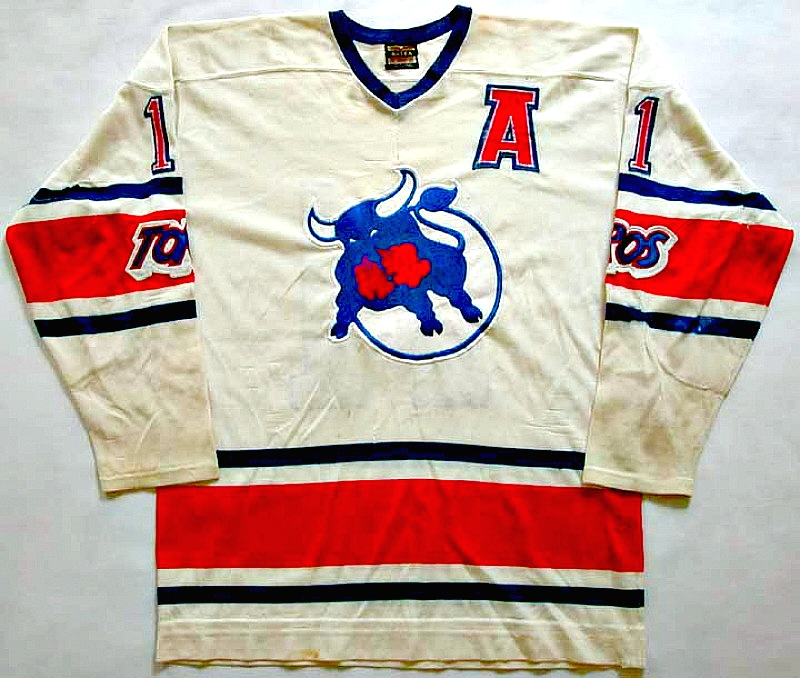
TORONTO TOROS: 1973–74 to 1975–76 — Varsity Arena (4,860) / Maple Leaf Gardens (16,316)
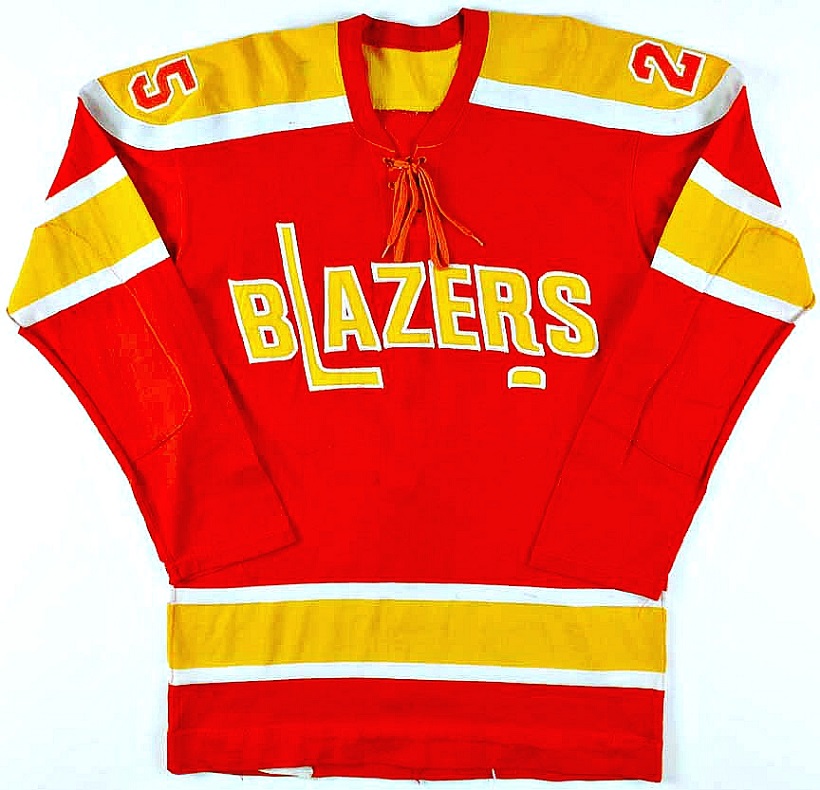
VANCOUVER BLAZERS: 1973–74 to 1974–75 — Pacific Coliseum (15,569)
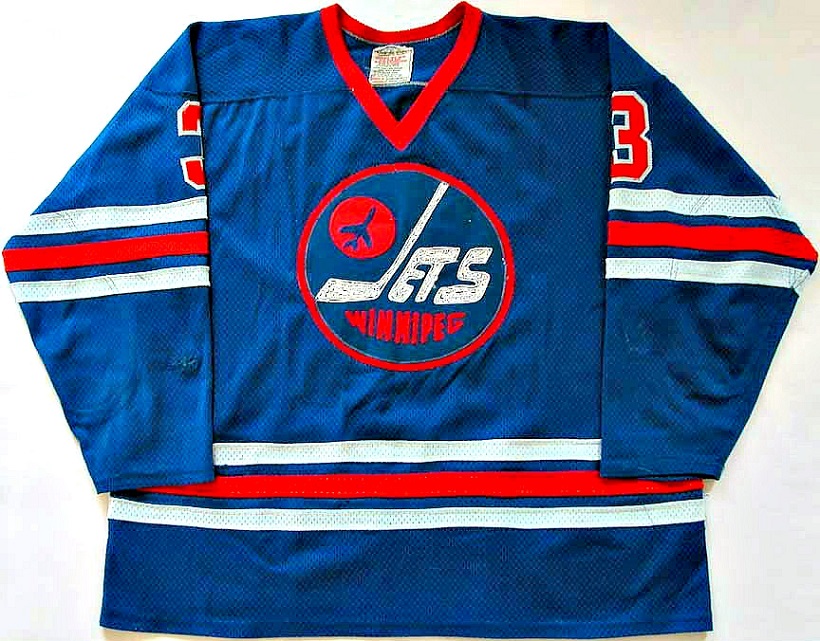
WINNIPEG JETS: 1972–73 to 1978–79 — Winnipeg Arena (10,131)
AT THE VERY START…
This remarkable, 490–page compilation, originally published in March 1995, included scores from every game played in the WHA and season–by–season statistics. Toward the back — and featured here — were summaries from several of the most–compelling games in league history:
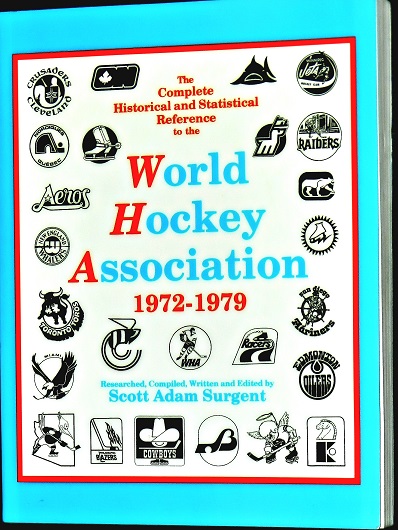
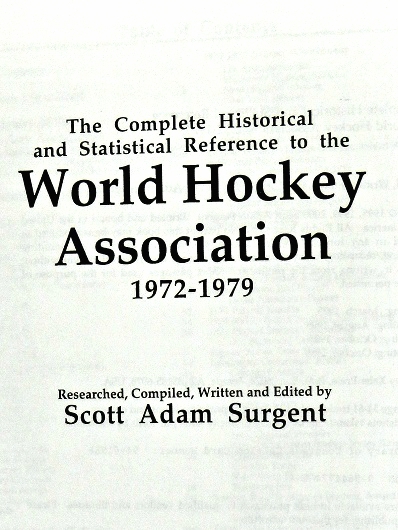
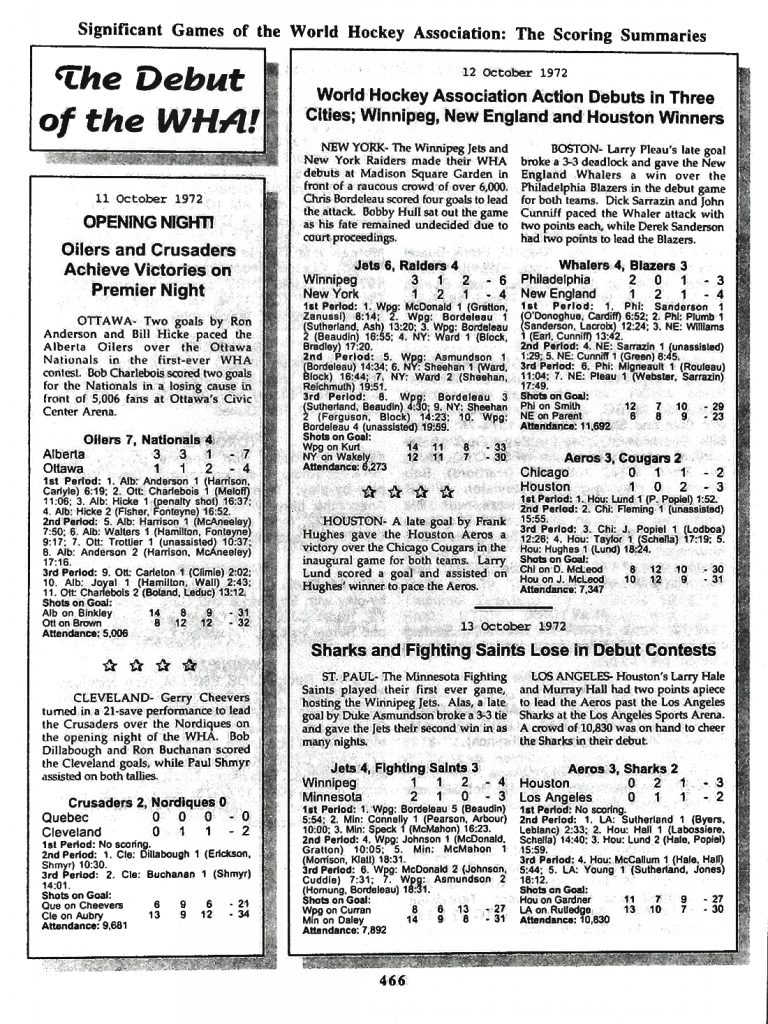
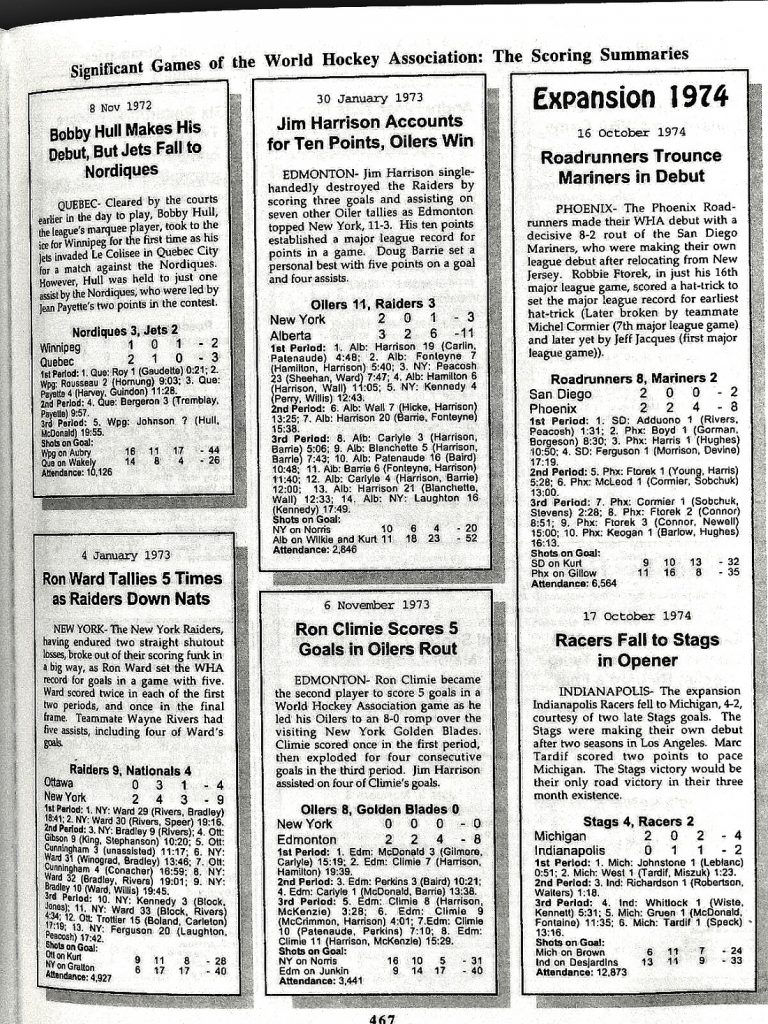
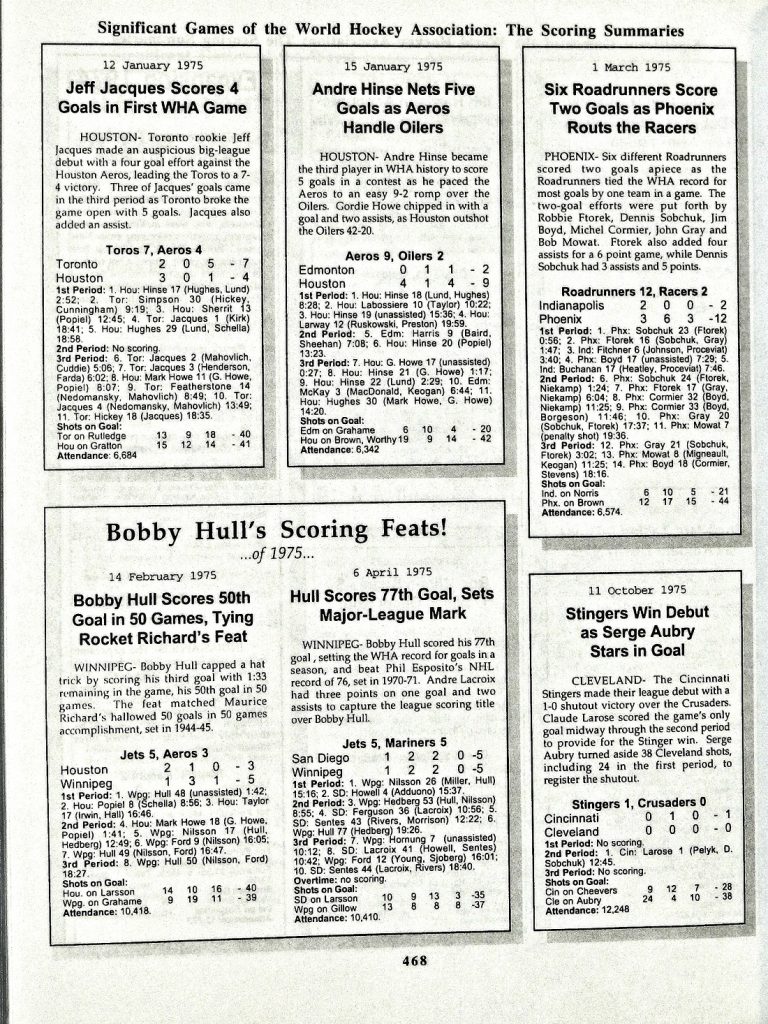
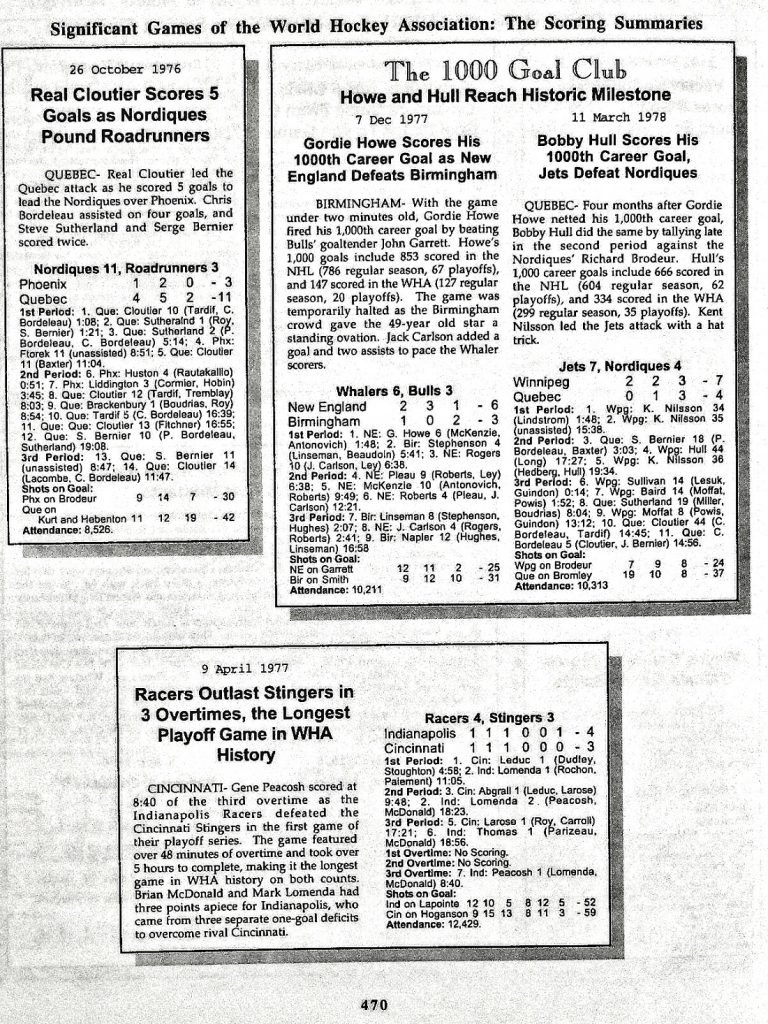
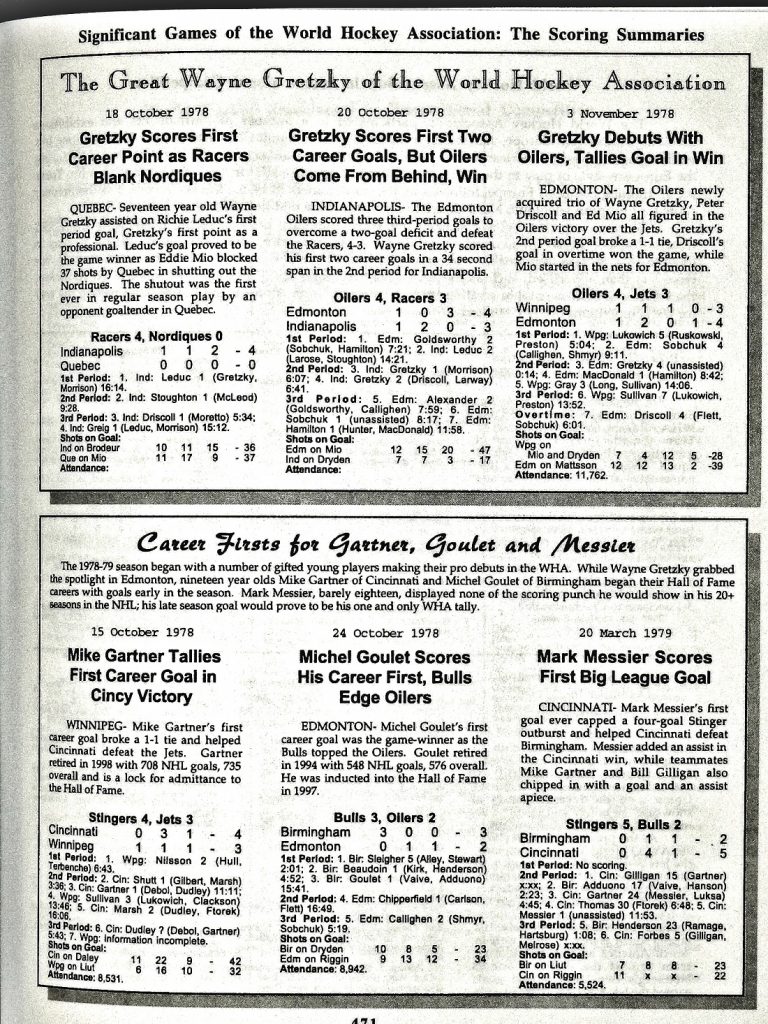
EMAIL: HOWARDLBERGER@GMAIL.COM

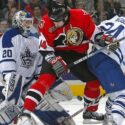
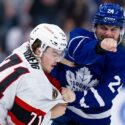
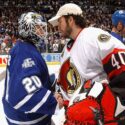






























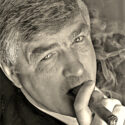
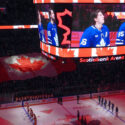
Hi Howard: Thanks for posting all of the pics of the WHA game jerseys, and game summaries. Your memorabilia collection of the WHA is just amazing, and brings back a lot of great memories for me as I worked in the league from beginning to end. Not many of today’s fans realize how many good teams there were in the WHA, and HHOF players who got their start there. What a crazy ride that was!! Amazed we survived seven years. Lots of fun, angst, pride, and wonderful memories all rolled into one. Thanks, again. Best always , Ron Asselstine (WHA 1972-79) ( NHL 1979-97)
he couldn’t have been that tired, he went and played for Denmark after the Leafs were eliminated.
No, he was fresh as a daisy in Game 7.